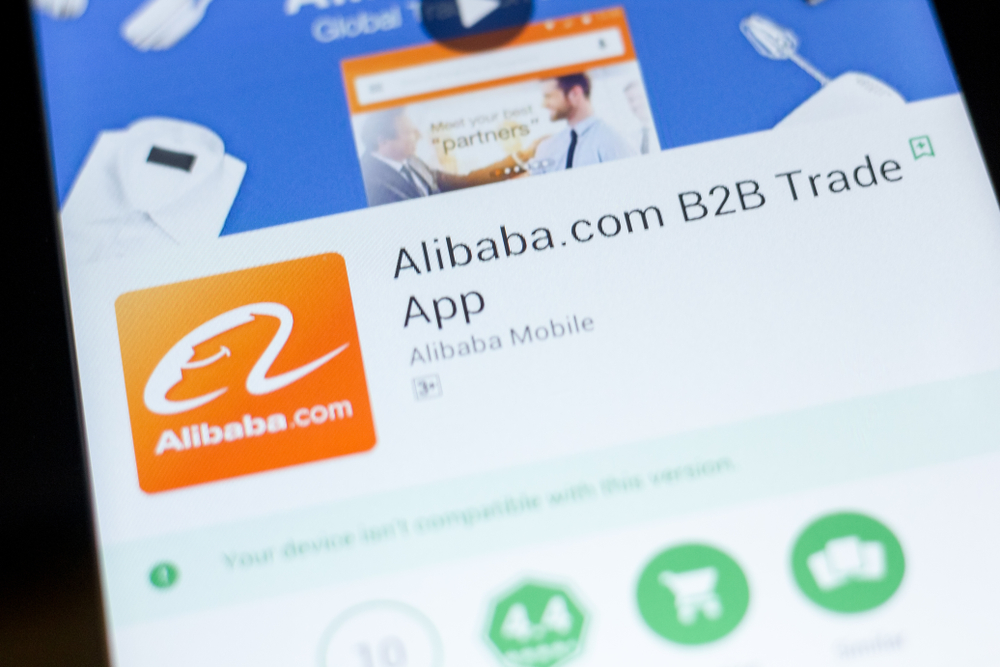
Alibaba Group today comprises e-commerce, online payments, logistics, even entertainment. But when the company launched 19 years ago, it was simply Alibaba.com, a B2B site connecting Chinese suppliers with businesses in the West.
Today, the site continues to play a critical role in Alibaba’s overall business, though a lot has changed since 1999, both at the site and the sourcing market as a whole. Alizila spoke to Kuo Zhang, general manager of Alibaba.com, about those changes as he kicked off the businesses’ annual Super September campaign.
How has Alibaba.com evolved from 1999 to now?
We’ve gone from a sourcing platform to an end-to-end trading platform. That means the site used to be a place where buyers and sellers could find each other online—usually American small businesses looking for suppliers or manufacturers in China. When you think about the fact that, in the pre-internet era, those types of deals only took place in person at major expos in Las Vegas or Guangzhou, what Alibaba.com offered was a really big deal.



These days, though, Alibaba.com is handling that entire process for the buyers and sellers, globally on one platform. We offer payment services, logistics services, loan services. We’ve digitized all the points in the customer journey, including inventory management and product display. In those early days that I just mentioned, buyers and sellers had to worry about everything: language barriers, distance, pricing, tax, foreign-exchange rates, logistics, you name it. But now, Alibaba.com has incorporated all of those elements into the transactions happening on the site, listing them and their costs and other relevant information clearly and simply for customers. That way, the only thing they need to do is focus on their business. We manage everything else.
What’s Super September?
Super September is to Alibaba.com what the 11.11 Global Shopping Festival is to Tmall. It’s our biggest promotional event of the year. So, we use the month to drive deeper engagement with Alibaba.com among our customers, and to draw new customers to the platform.
For example, we’re offering $1 wire transfers to Europe and Australia for the first time, where they cost one euro and one AU$1, respectively. Also, we cut the costs for our logistics services in half. Right now, 10% of our customers use Alibaba.com Logistics. The goal for September is to get it up to 15%. For Pay Later, our online small-loan program, we’re offering the first month for free if you sign up in September, with the following months costing 1.25% of the order.
We’ve also expanded the scope to include what we think are potentially high-growth supplier countries. So, we’re marketing heavily to suppliers in Turkey, Malaysia, Japan and Thailand.
You mentioned American buyers and Chinese suppliers before. Is that still the majority of trade happening on the platform?
Certainly, the majority of suppliers are Chinese. But we’re focused on what we call “Global Buy, Global Sell.” We want to see trade between all countries and that is a growing trend on the platform. Turkey, actually, has the second-highest number of suppliers. Malaysia is another top supplier country, and even the U.S. and Europe have their share as well. So, our customer base is growing. And then when you consider that we have 10 million active buyers—people who are looking for suppliers of finished products or parts and components to make products themselves, or having someone produce their designs and creations—across over 200 countries and regions, that’s an opportunity for a lot of trade between countries across the globe.
And you’re handling all aspects of these deals, from order to delivery?
Buyers and sellers aren’t obligated to use add-on services like logistics or customs clearance or financing. But our goal as a business is to handle everything from a seller’s factory to a buyer’s inventory. And we’ve been working toward that since the business launched in 1999.
Take payments, for instance. We were the first B2B platform in the world to offer an online-payment functionality to users. This is critical because cross-border payments face all sorts of challenges, like if a banks blocks a credit-card transaction or a wire transfer fee is too high. But If you pay using our platform, transactions go through a majority of the time and our transfer fees are just $1. We also have a new feature called Pay Later available in the U.S. that allows buyers to pay for their orders over a 12-month period.
For logistics, we’re trying to provide digitized and data-driven solutions to make them more efficient. That’s important when you consider that nearly 30% of costs for every B2B transaction are in the supply chain. That includes logistics, customs clearance, foreign exchange and payments. That’s a lot to manage. But our “One Touch” solution takes care of it all. Customs clearance is handled all online. They can track their orders from shipment to delivery. We guarantee seven-day air delivery and 31 days by sea.
Mobile’s a huge part of the consumer experience these days. Are you seeing the same adoption in business-to-business deals on Alibaba.com?
Absolutely. As of June, 54% of visitors to the site came via mobile, 40% of our buyers conducted some part of their transaction using a mobile phone. But rather than replacing PCs, mobile phones are handling separate tasks. Maybe a customer starts their sourcing on a PC, but they are starting to switch to mobile to respond to inquiries, things like that. Mobile allows for much faster response times, which customers like. It’s a sign of professionalism, it’s good for business. Mobile phones are being used for negotiating now, too, and even some sourcing. So, yes, mobile is very much a driving force behind the B2B market, where it wasn’t just a couple of years ago.
Let’s talk about technology. It’s interesting that your approach to trade, which has been around since the beginning of time, is to inject tech-based innovations.
And look at what we’ve been able to do to help small businesses overcome barriers related to distance, language and scale: Digital payments, for one. Online chat clients that allow buyers and sellers to talk while they’re on Alibaba.com. We also just launched real-time, text-based translation for Chinese, English, Russian and Spanish, so buyers and sellers don’t even need to speak the same language any more to conduct business.
We have image-based search called Source Now that allows users to just snap a photo of a product they like with their phones, and use that picture to look for suppliers who are capable of manufacturing similar products on Alibaba.com. Suppliers can livestream from, or post short videos about, their factories so buyers can make their decisions without even having to come to China to check them out in person.
And we’ve basically digitized every aspect of a product’s presentation on the site. It takes data from suppliers and manages it for the convenience of buyers. That includes, the price per quantity of your order, whether that price includes other fees, such as packaging, real-time inventory, a product’s intellectual-property protection. Everything a buyer could need to know to complete an order is included, and it’s all online. So it’s comprehensive, accurate and convenient for our customers.
We’re using technology and data to transform global trading. That’s our mission. I really think we’re going to change this entire global-trading phenomenon in the next couple years.




